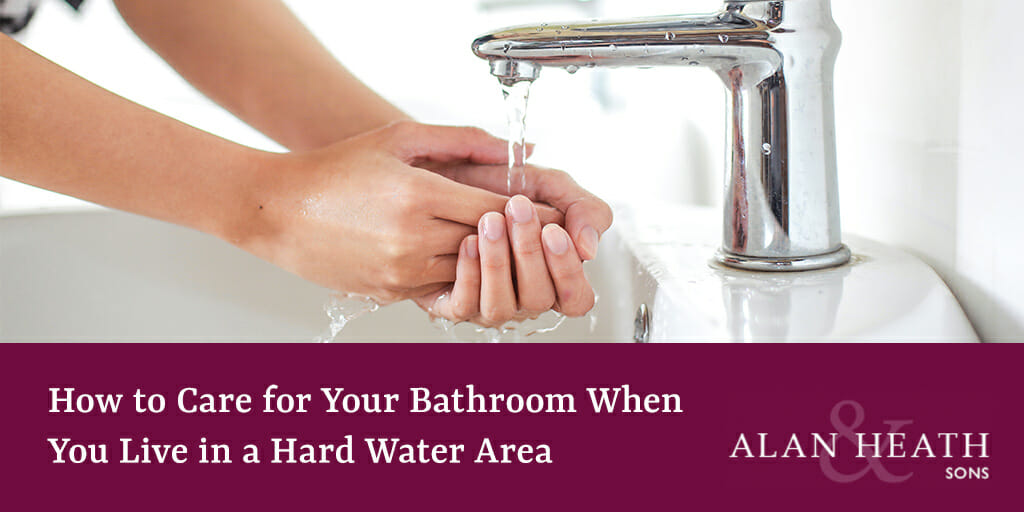 Do you live in a hard water area? You may not even know, but a little glance around your home could give you all the clues you need. Are there water marks and limescale on your sinks, around your taps, and inside your shower head?
Do you live in a hard water area? You may not even know, but a little glance around your home could give you all the clues you need. Are there water marks and limescale on your sinks, around your taps, and inside your shower head?
Hard water contains more minerals than soft water; minerals such as magnesium, potassium, and calcium. While some of these might be beneficial to your health, they can be hard wearing on your bathroom, most noticeably in the form of limescale build-up.
What is limescale?
As water in your bathrooms dries and evaporates the minerals are left behind, causing a build-up of white deposits on your taps, in your shower, and even in your toilet.
As the limescale stain builds up it will make your bathroom look older and more worn. The limescale can also discolour over time, leaving your water zones feeling a little bit grubby. Eventually, a concentration of limescale may clog your shower head or cause your toilet to flush slower, just as it collects around pipes in your kettle.
Do bathroom cleaners work?
When you first install your bathroom you’re possibly more motivated to keep it shiny and fresh looking. That means you’re probably also more likely to follow the manufacturer’s instructions in caring for your bathroom furniture.
Generally, most manufacturers will tell you that all you need to do is regularly clean your bath with warm soapy water. A manufacturer is unlikely to recommend a bathroom cleaner, as they cannot guarantee which ingredients it contains – or even if the recipe for that cleaner brand won’t change in the future.
Manufacturers want to avoid abrasive chemicals which can scratch and mark certain materials, ruining the shiny appearance of your beautiful new bathroom. Even worse, if they can tell you have used a harsh chemical against their advice, your guarantee will be null and void.
Prevention is better than cure
The best way to care for your bathroom is to stop limescale gaining a hold in the first place.
In our experience, keeping your bathroom clean and regularly wiping down wet areas will help stop the mineral deposits from building up, and so warm soapy water will do the job.
Another handy bathroom tool is a squeegee, just like the ones your window cleaner might use. After each shower, just spend a minute giving your shower screen a quick once over, and that will remove most of the water before it has a chance to evaporate.
If you do prefer to use a bathroom cleaner, it’s important to pick the right one. Your bathroom furniture, floor and walls can be made from various materials, so always check the bottle to see what type of surface it is best for, such as porcelain, chrome, or plastic.
If you’d like to discuss the different options in bathroom furniture and see which products would be long lasting and simplest to keep your bathroom clean and bright, visit our Coventry showroom and talk with our experts.

